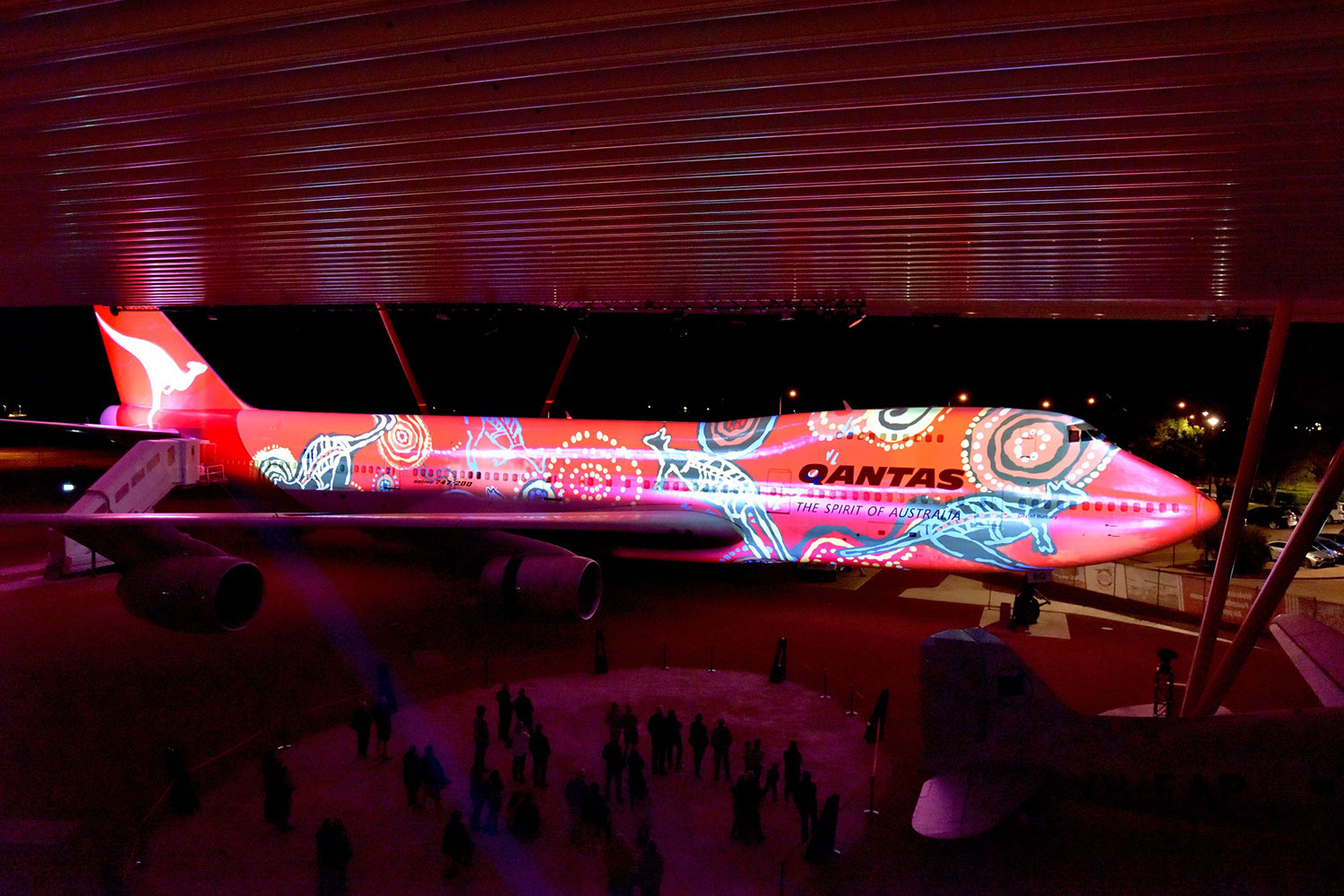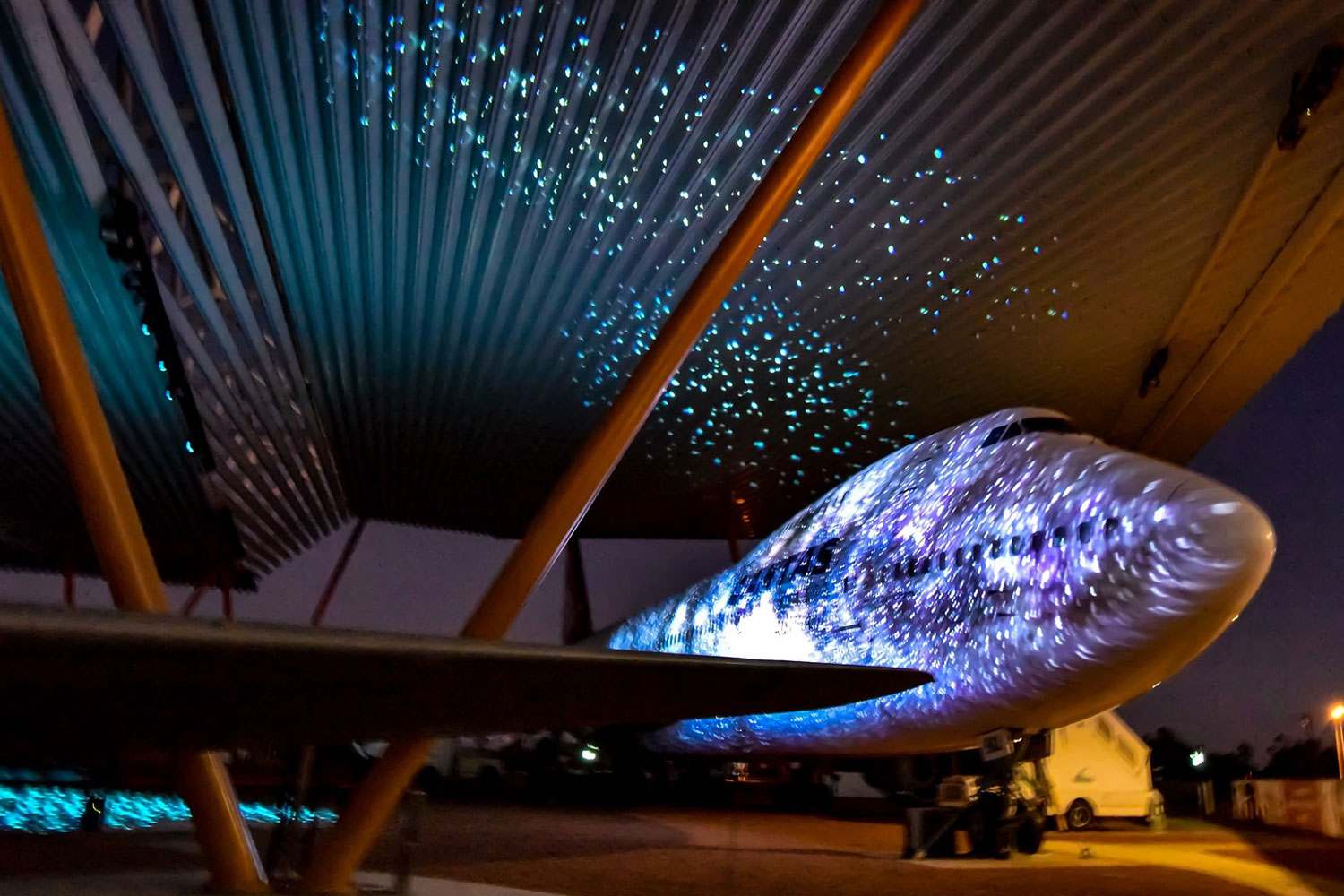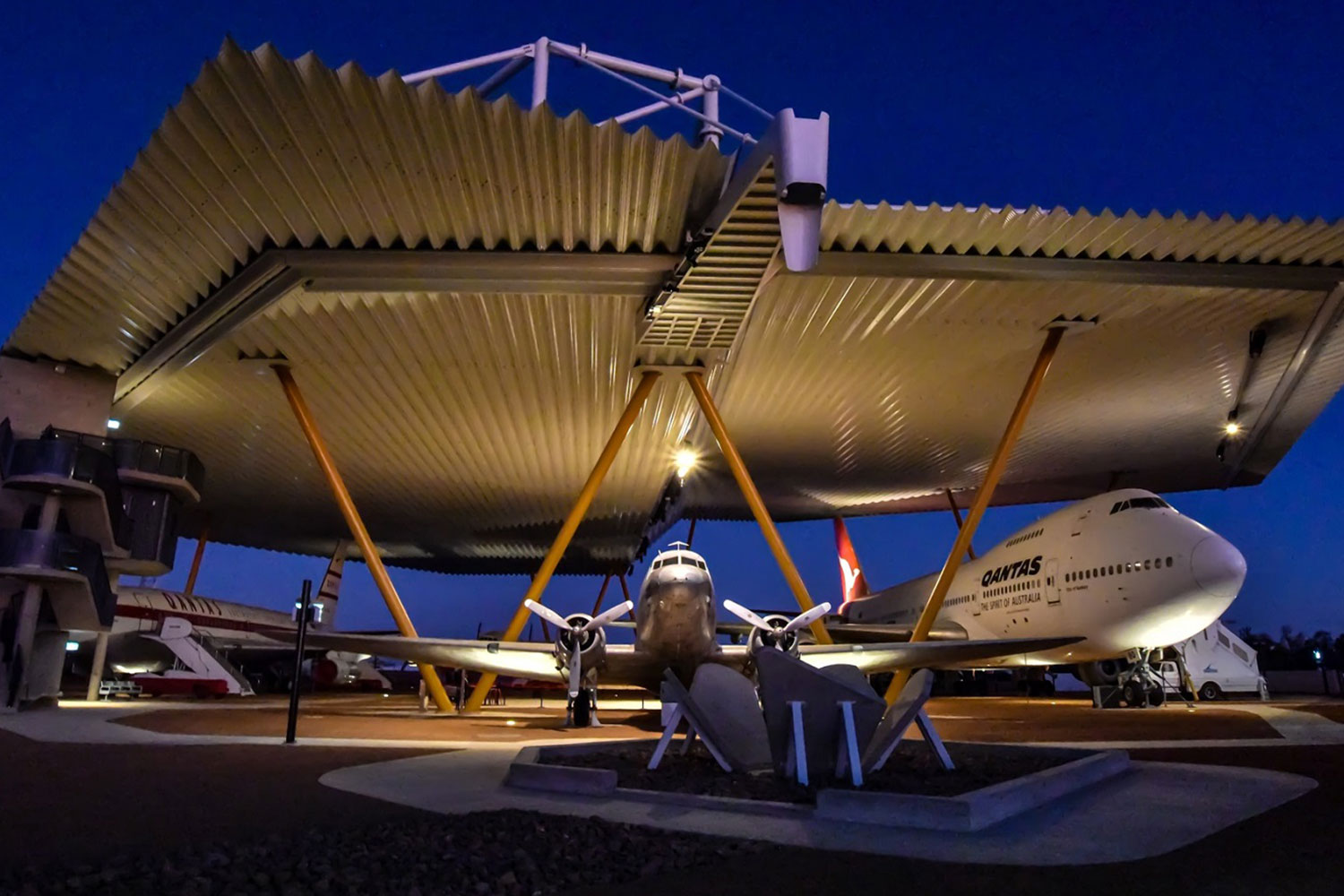Article by Jason Allen
First published in CX Magazine March 2021
View Article Here
The Lockheed Super Constellation was a four-propeller aircraft that was the pride of the Qantas fleet from the late 1940s until the jet age. Ushering in the age of international air travel, the pressurised Super Constellation was the first to fly Qantas’s ‘Kangaroo Route’ from Sydney to London in 1947, a trip that cost the customer equivalent of $20,000 in today’s money. And that was just one-way.
Today, a beautifully restored Constellation sits in the Qantas Founder’s Museum in Longreach, Queensland, and its start-up and take-off is simulated for the stunning ‘Luminescent Longreach’ night-time light and sound spectacular. A couple of props spinning and a bit of noise might not seem a big deal to simulate, but the old Constellation wasn’t that simple. Its four engines were wellknown for belching huge clouds of smoke and shooting literal jets of flame on start-up and in flight, to the extent that seats behind the engines were sold at a discount.
Photo Credit: John Elliot
The Lockheed Super Constellation was a four-propeller aircraft that was the pride of the Qantas fleet from the late 1940s until the jet age. Ushering in the age of international air travel.
Photo Credit: John Elliot
Anthony Rawson, Senior Associate at Buchan Group, the global design studio that created ‘Luminescent Longreach’, had to figure out how to simulate this effect without the actual smoke and flames. “Super Constellations make a staggeringly dense and visually spectacular amount of smoke and flame on start-up,” he relates. “It’s definitely something you would not want to be breathing. Despite this, they were the glamorous international aircraft of the time. They were very elegant – the original Air Force One was a Constellation.”
The 20 minute ‘Luminescent Longreach’ uses projection mapping, custom gobos, and a Meyer Sound Space map Go immersive sound system to guide the audience through the story of Qantas from its founding to the present day. Presented in a roofed but outdoor museum, the site is the size of two football fields and houses several large aircraft, which are the canvases Buchan Group used for the projections.
The 20 minute ‘Luminescent Longreach’ uses projection mapping, custom gobos, and a Meyer Sound Space map Go immersive sound system to guide the audience through the story of Qantas from its founding to the present day.
“We can’t actually start the Constellation, so we had to use lights, a synchronised guttural tone, and billowing smoke to simulate it,” elaborates Anthony. “We needed to create enough smoke to carry the light and help the sound, to give it more gravity. The solution we came up with, with input from distributor ULA Group, was to use two MDG Me1 fog generators that output to two engines each. There are DMX controlled lights fitted in each of the engines supplemented by four spots on the ground. Before we took this system out to Longreach, we tested the concept in our garage in Brisbane, and it turned out to be a lot more impressive than we dared hope!”
Apart from their huge output capability and legendary reliability, Anthony and BuchanGroup chose the MDG Me1 for their tiny size– just 61cm long, 18cm wide, and 30cm high.“Size was a major factor as the fog generators needed to fit in the engine and wheel bays,”expands Anthony. “The cannister of gasand cabling for control also had to fit. Wetook ULA’s advice on their reliability and there placement cycle for consumables, which has meant we only have to change the gas about every eight months, which is pretty impressive considering the show has been far out-selling expectations ever since it started.”
Photo Credit: John Elliot
“We needed to create enough smoke to carry the light and help the sound, to give it more gravity. The solution we came up with, with input from distributor ULA Group, was to use two MDG Me1 fog generators that output to two engines each.” Anthony Rawson, Senior Associate at Buchan Group
With the entire site exposed to the elements in the form of wind, dust and occasional sideways rainstorms, any lighting used around the exhibit had to be IP65 rated. “The Museum liked the idea of projecting onto the underside of the roof, which is around 16 times the size of a large drive-in theatre screen,” explains Anthony. “That was going to be hard to look at, craning your neck. As the planes are the heroes of the story, along with the founders, we came up with the idea of projecting onto the planes. So, we needed to control projection onto the ground, the underside, and sides of the planes. We needed a programmable spot with gobo capabilities that was wide and bright. We found that the IP65-rated Elation Proteus Maximus was the right unit for the job.”
The Museum houses nine Elation Proetus Maximus, with six rigged overhead, two on the ground, and a spare. “We’ve had custom gobos made for all of them,” Anthony expands. “There’s a scene set in Gallipoli where we need storm clouds, and Enlighten in Sydney came up with a half-tone process with a half-tone cloud which we carefully defocus into a continuous looking image. Gobotech made some high-contrast plane profiles for us. We also use the Proteus Maximus as coloured spots, stars, ground textures, and as a travelling spot. The travelling spots direct the audience’s attention from a 747 to another plane, tracking 180 degrees around the crowd. They’re workhorse unit.”
It’s the weatherproofing that posed the greatest challenge to selecting a fixture to be the Museum’s workhorse. “None of this would have been difficult but for the weatherproofing requirements,” admits Anthony. “Not only is the Museum technically outside, ambient light levels are at interior rates, so it’s the worst of both worlds. The roof is on two planes, so rain can fall through the split between the two. The rail where the lighting and speakers are rigged is along that median, but there’s never been a problem. The two Proteus Maximus we have on the ground are more exposed, depending on the direction of the rain, but they’re easier to access for service. With the Proteus Maximus, we could literally hose them down, though we treat them more carefully than that!”






